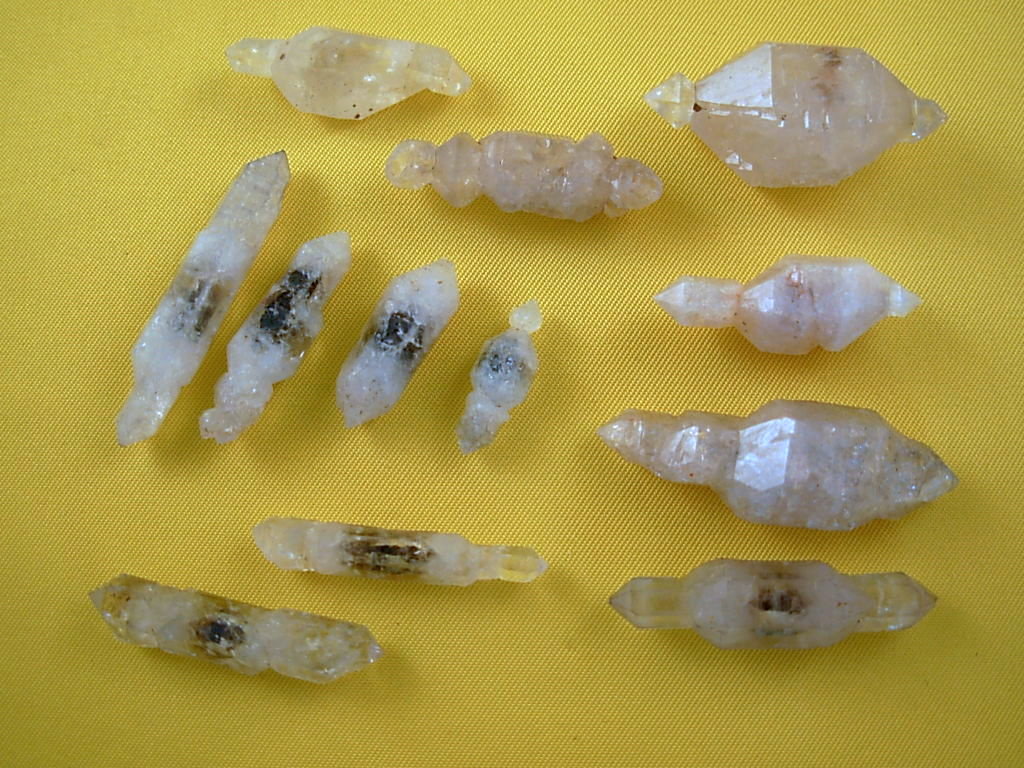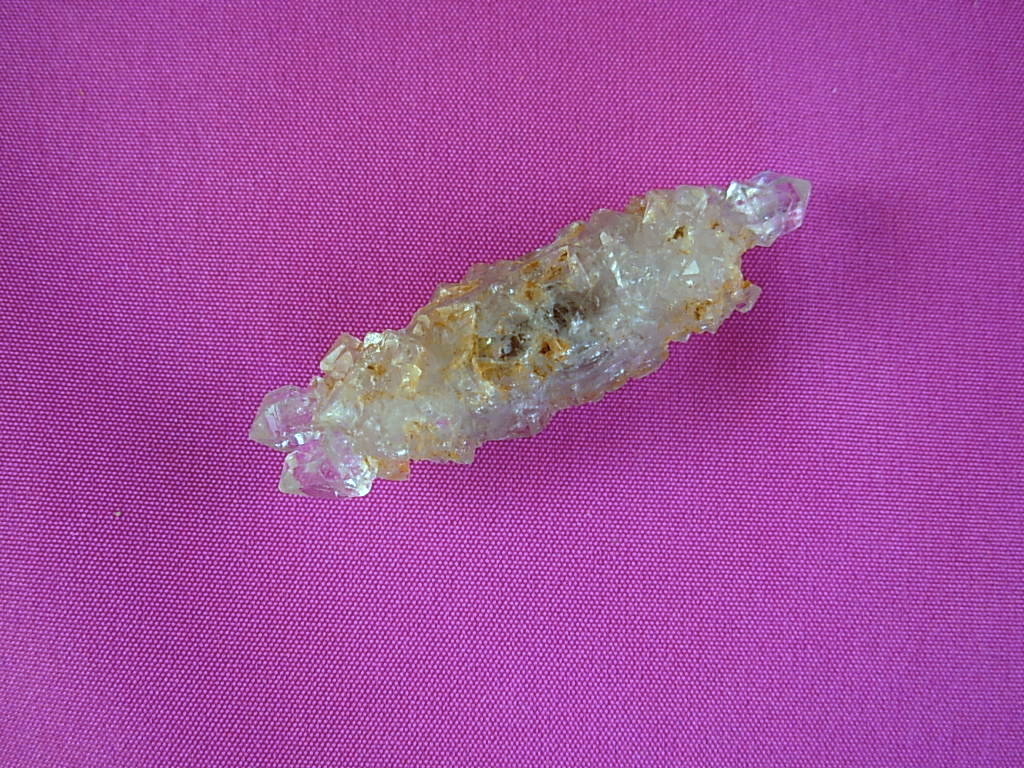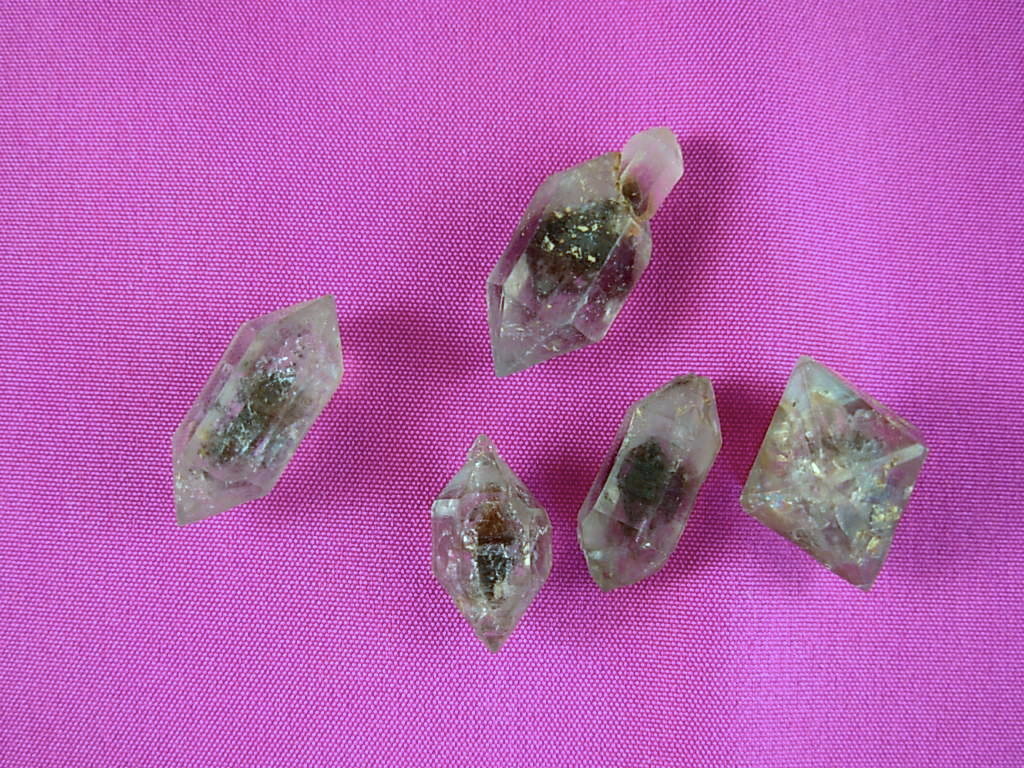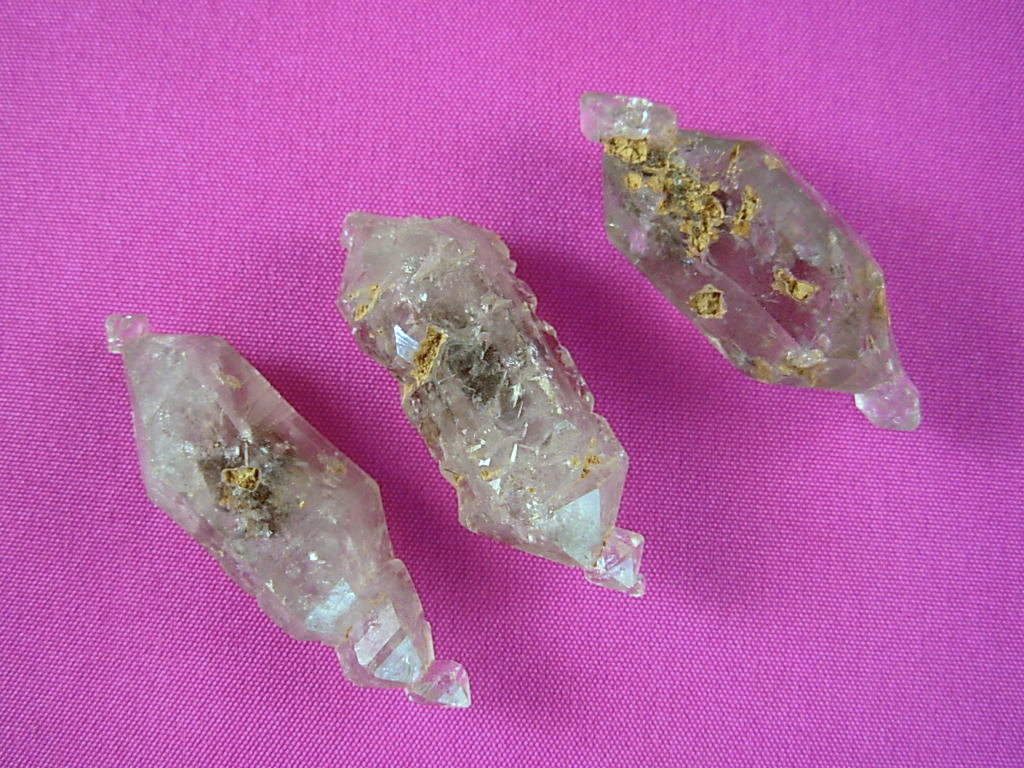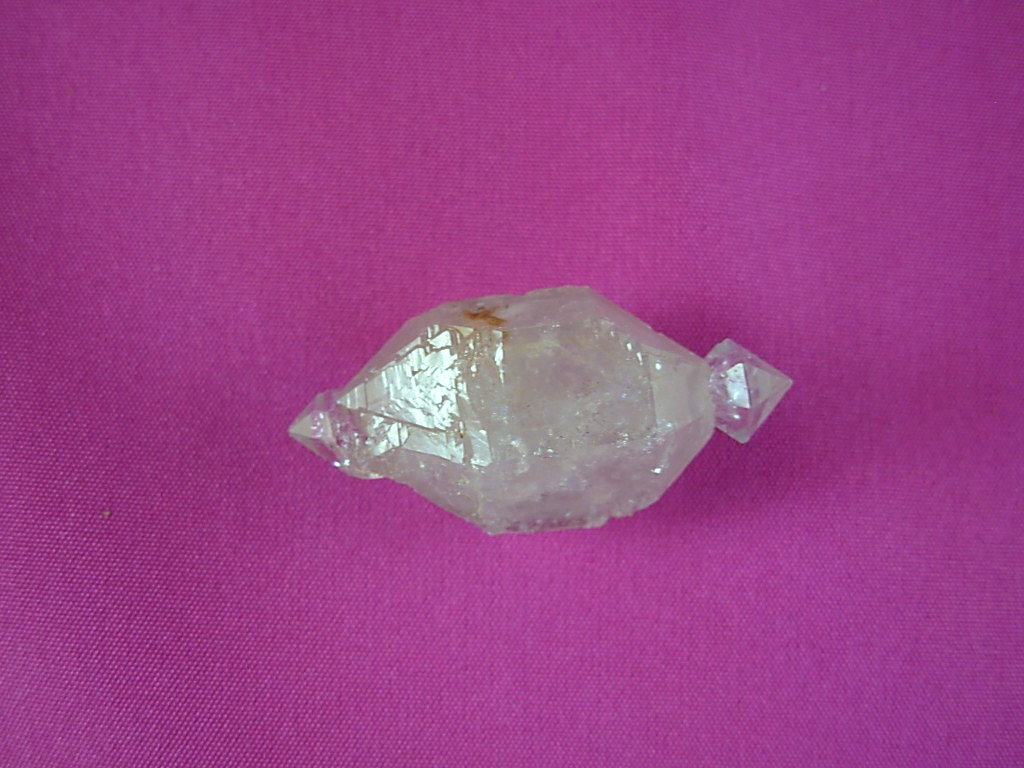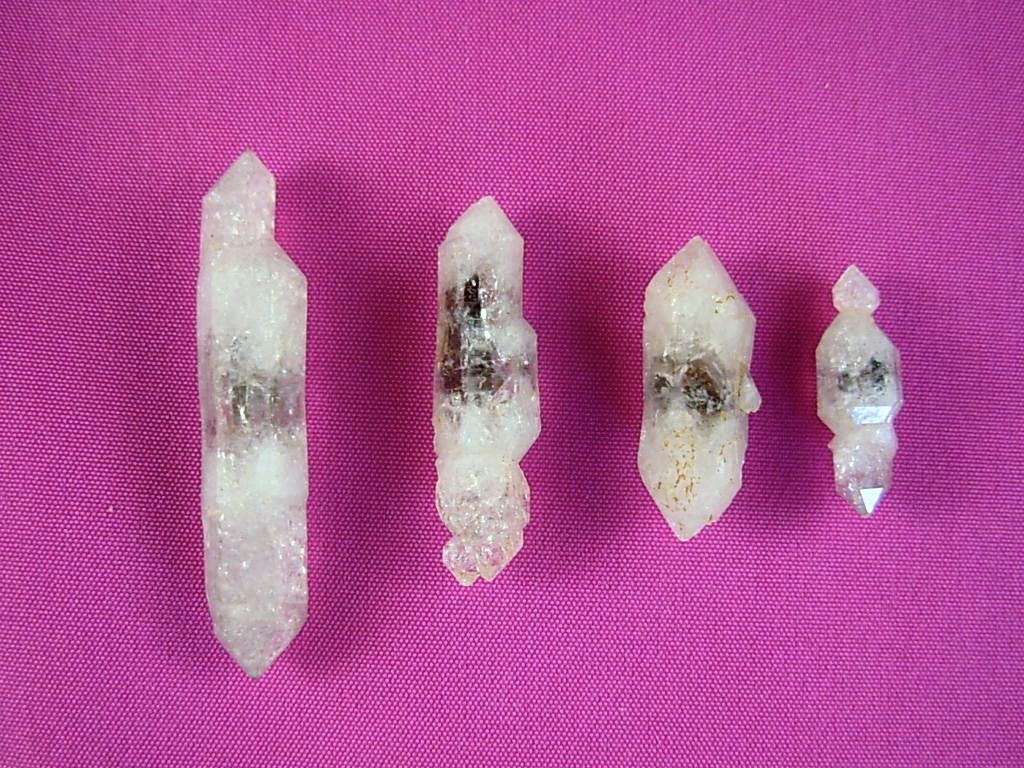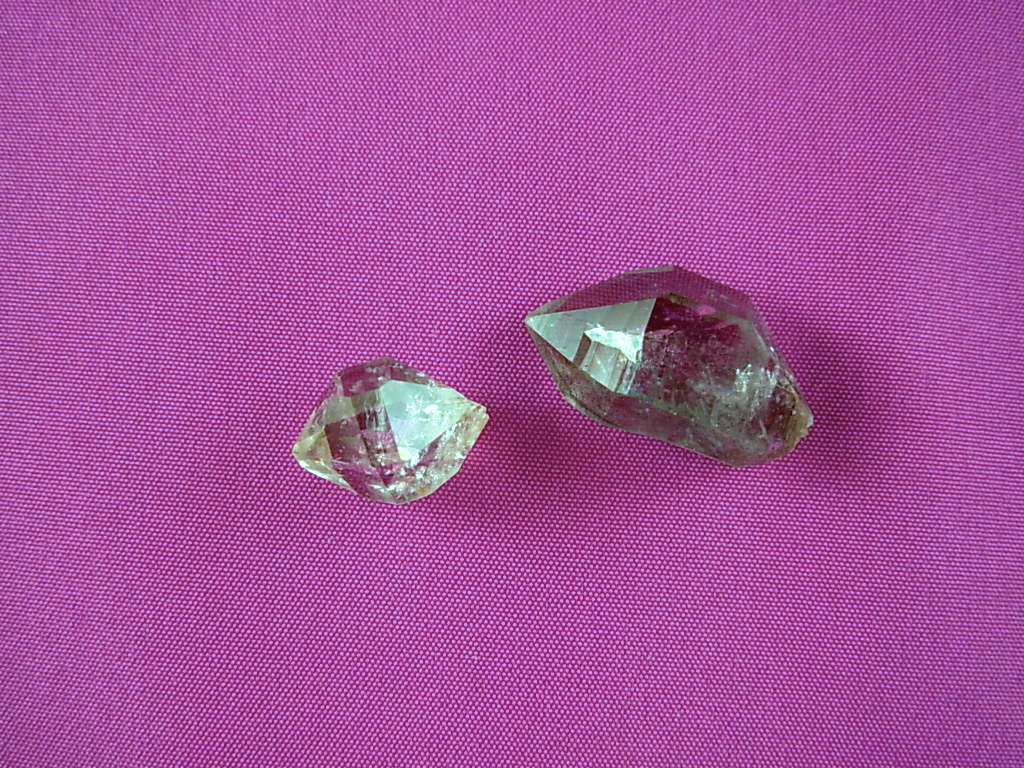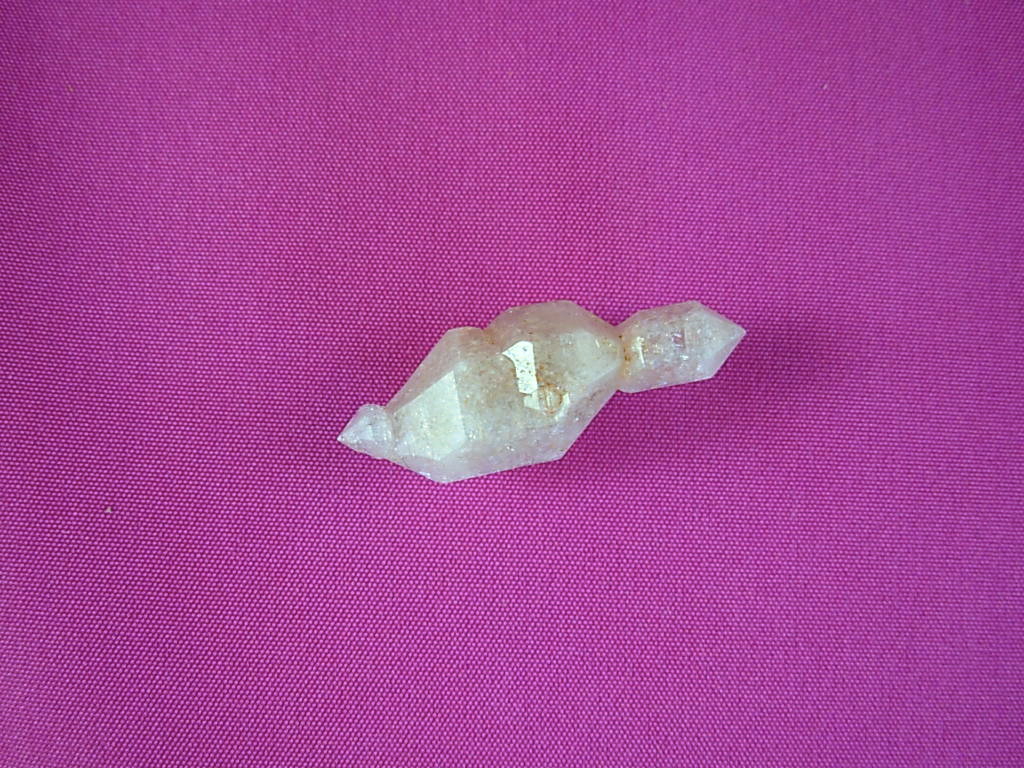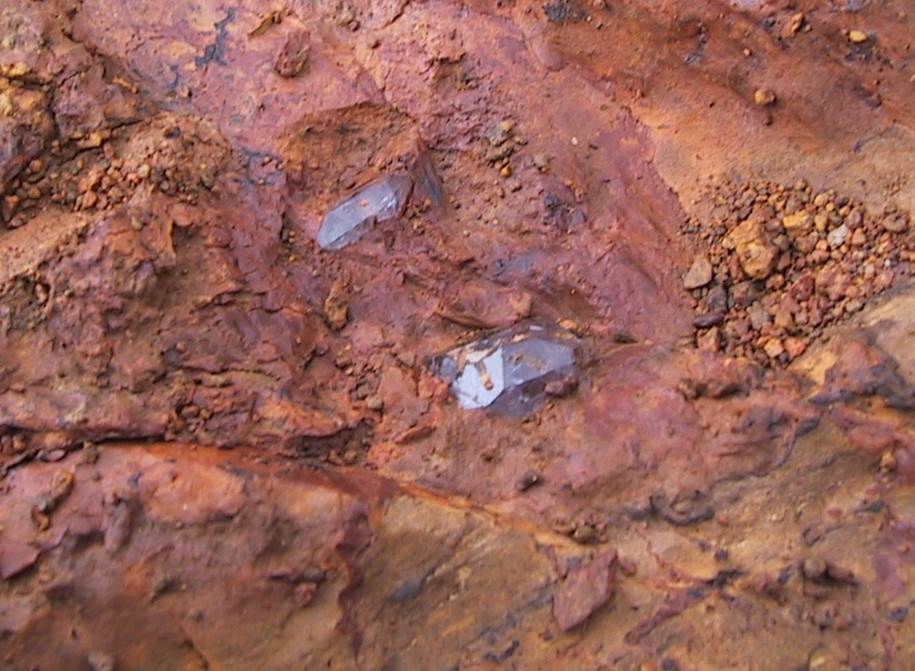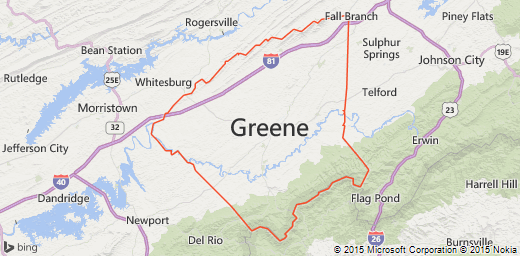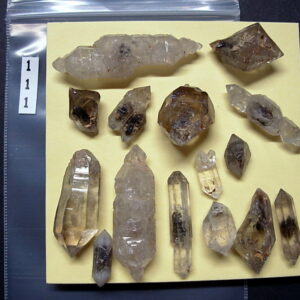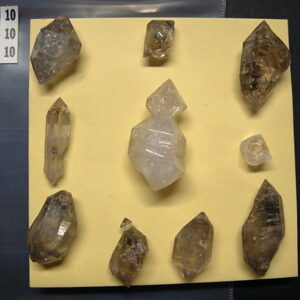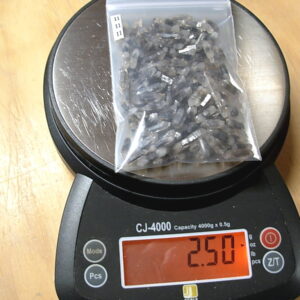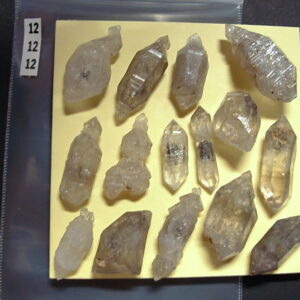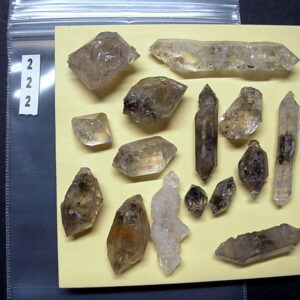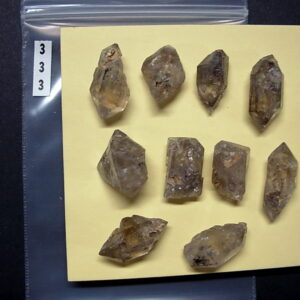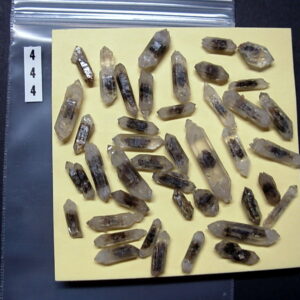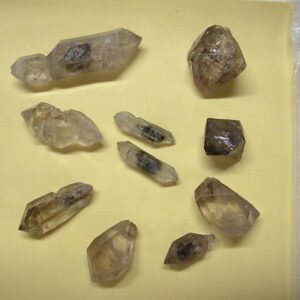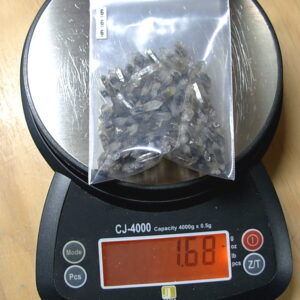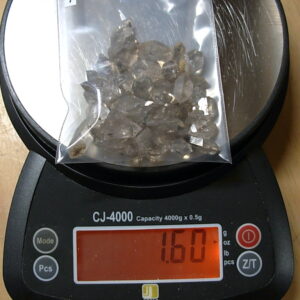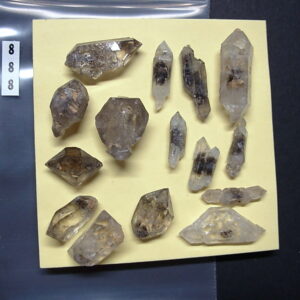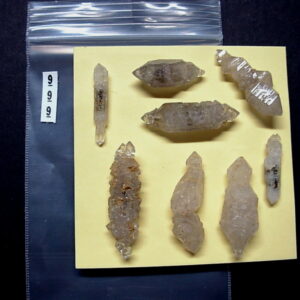Quartz Crystals from Saltville, Smyth County,VA and Info on Douglas Dam and Greene County, TN
Quartz Crystals near Saltville, Virginia
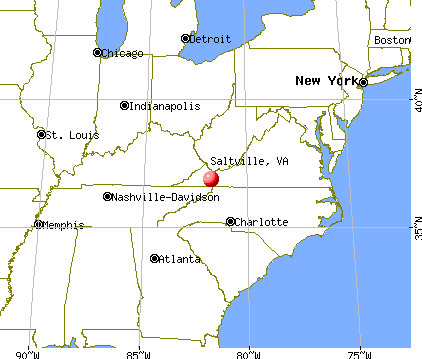
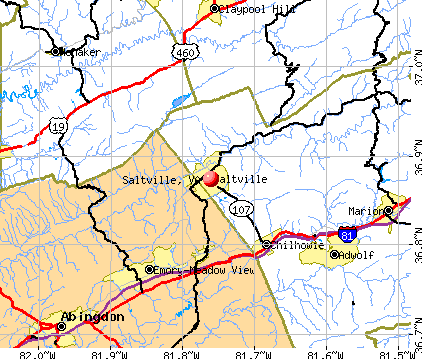
A variety of crystals may be found here. Crystals occur near Saltville in dark limy shales and shaly limestone layers above the post-Knox unconformity. An unconformity is a gap in the rock record, when either no deposits occurred, or there was erosion. Roughly 450 million years ago, the state of Virginia was under a body of water known as the "Sauk Sea". The Knox Unconformity occurred when the Sauk sea level fell dramatically. As the sea water drained off of the Virginia landscape, sedimentary rocks became exposed and began to erode. In Virginia, the Knox Unconformity is not consistent and sometimes barely exists, mostly in low areas that probably remained underwater when the sea fell to its lowest level.
Most of these amazing Saltville crystals are found in light colored soil material formed from rock weathering in place, but they are also found in vugs or seams in un-weathered bedrock. A surprising variety of crystal morphologies (crystal shapes) can be found. They are uniquely distinct from Tennessee crystals due to this variety being formed in a post-unconformity setting. Habits include both prismatic and bi-pyramidal doubly-terminated crystals occurring side by side, many with small "capping" crystals at both ends.
Tectonically, these crystals are in the Saltville thrust sheet above the Saltville Fault which comes to the surface over two miles to the northwest. That area is historically known for its salt seeps, brine wells, and gypsum mining. Halite (rock salt) and gypsum occur at depth below the fault and were heavily involved in the Saltville Fault earthquake shearing and deformation. The history of shearing and deformation is complex. These tension gash fractures are found in local bedrock. They are small and narrow, but larger ones weathered to produce the residual soils.
Internal carbonaceous phantoms are common and suggest an early stage of equant stubby crystals (crystals of nearly equal dimensions) of simple morphology. Their precise shape and outlines are indistinct, as the black central area is defined by the presence of large irregular inclusions as much as a defined crystal shape. No fluorescence from petroleum is visible under a low power microscope. This sequence is in contrast to the "bi-pyramidal over prismatic" growth commonly observed in crystals in Tennessee, where overgrowths, and crystals from the Sevier Shale thought to be of later origin, are more commonly bipyramidal. Re-healing of broken surfaces can also be observed in some specimens, suggesting that growth took place during deformation of the surrounding rock. Most crystal faces are complex, with mirror-like faces the exception.
These unique crystals are often referred to as "Saltville Quartz", "Saltville Diamonds" or "Virginia Knobby Quartz"
(information paraphrased from www.sepmstrata.org, Whisonant, Robert C, 1996. Geology and the Civil War in Southwestern Virginia:
The Smyth County salt works Virginia Minerals, Vol. 42, No. 3. Virginia Division of Mineral Resources, Charlottesville, VA 22903 ) and Saltville.html
Similar quartz crystals are found in the mineral deposits of the Mosheim and Johnson anticlines in Greene County, Tennessee and in the winter near the Douglas Dam.
The Mosheim and Johnson anticlines, which expose beds containing mineral deposits, are in the southeastern part of the Valley and Ridge province, near the central part of Greene County, Tennessee. The Mosheim anticline and the Johnson anticline are about 7 and 2 miles northwest of Greeneville, respectively. An anticline is a formation of stratified rock raised up, by folding, into a broad arch so that the strata slopes down on both sides from a common crest (an upward fold of stratified rock). A downward fold of stratified rock is called a synkline. Loose quartz crystals locally called "Field Diamonds" can be found in these areas of Greene County.
Each winter, the Tennessee Valley Authority significantly lowers the level of Douglas Lake for flood control. Water level varies about 41 feet in a normal year. Formed by the French Broad River and tributaries of the Nolichucky and Pigeon Rivers, the 30,400-acre lake provides a large expanse of dry lake bottom where quartz crystals may be found as "float". The easiest place to look is Douglas Dam on the French Broad River about 15 miles outside Pigeon Forge, Tennessee. Douglas Lake is a good source of these crystals, known locally as "Douglas Diamonds". Quartz at the lake comes in a variety of crystal forms, ranging in size from about 1/16th of an inch to an inch or longer. These crystals may resemble small Herkimer Diamonds, or Pecos Diamonds. Carbonaceous inclusions (black) or hematite inclusions (giving them a nice reddish color) may often be present in these crystals.
-
Saltville Quartz 1 (15 pcs)
$20.05 Read more -
Saltville Quartz 10 (10 pcs)
$14.85 Read more -
Saltville Quartz 11 (2.5 oz bag of Small Crystals)
$37.68 Read more -
Saltville Quartz 12 (15pcs)
$25.57 Read more -
Saltville Quartz 2 (15 pcs)
$17.33 Read more -
Saltville Quartz 3 (10 pcs)
$14.58 Read more -
Saltville Quartz 4 (40 pcs)
$9.35 Read more -
Saltville Quartz 5 (10 pcs)
$7.98 Read more -
Saltville Quartz 6 (1.68 oz bag)
$26.40 Read more -
Saltville Quartz 7 (1.6 oz bag)
$25.03 Read more -
Saltville Quartz 8 (15 pcs)
$15.95 Read more -
Saltville Quartz 9 (8 pcs)
$18.75 Read more
Saltville Quartz aka Knobby Quartz aka Saltville Diamonds
Ship to USA ONLY
We were able to procure a one time collection of these Saltville quartz crystals from the estate of an old time life long collection of these unique crystal specimens. Their shapes are amazing and are some of the most interesting crystal forms we have seen in many years. What we will be listing here is everything we were able to procure...we are selling them in lots. The bulk of these have already been sold...when these are gone we will not be aquiring any more...once they are gone...they are gone. We will post our final listings as "Close Out"

